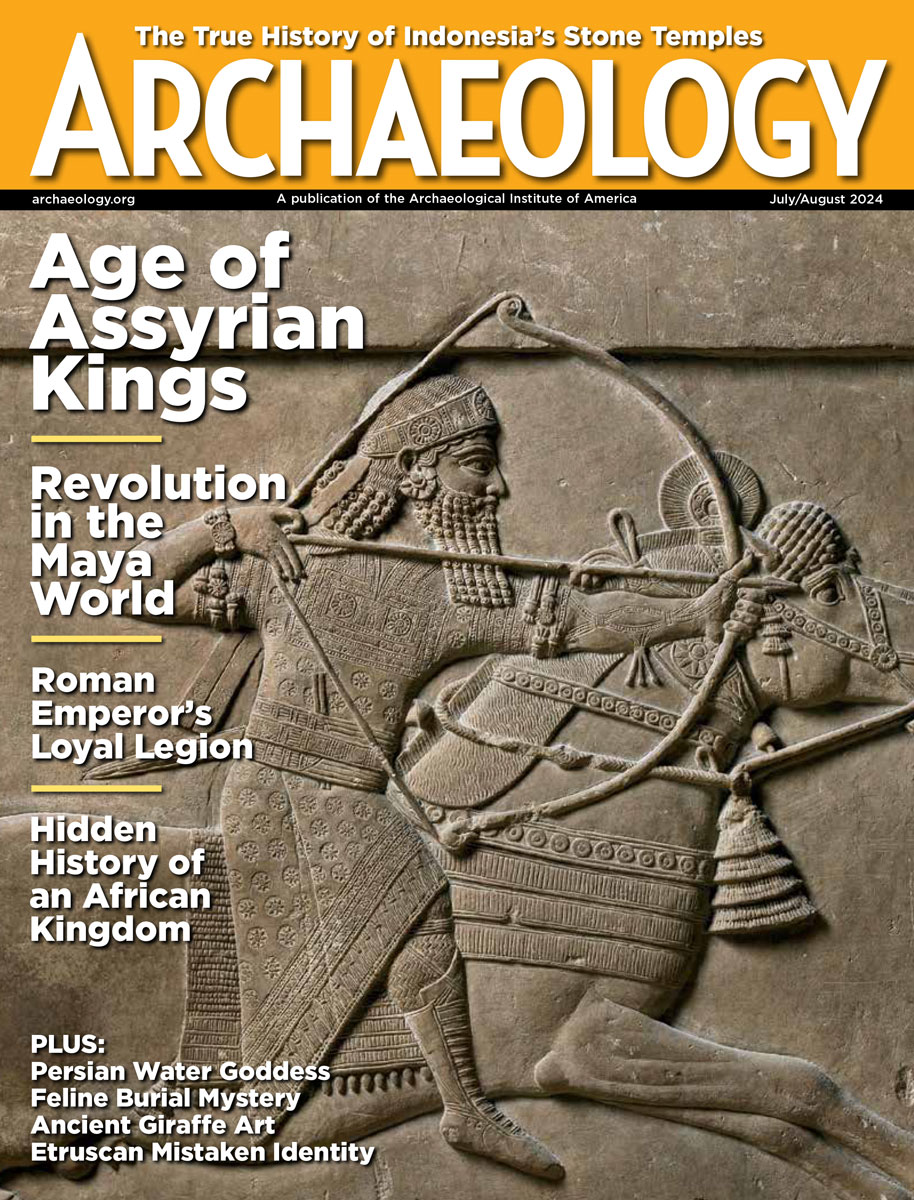Thursday, November 20
November 20, 2008
Roman-style wall paintings have been uncovered at the fortress of Herodium, thought to be the home and burial place of King Herod, the Jewish proxy ruler under Roman occupation during the first century B.C. “There has been no other discovery of this type of painting in the Middle East, as far as we know, until now,” said site surveyor Rachel Chachy-Laureys. She thinks that the work was done by artisans imported from Rome.  Herodium lies deep within the West Bank, in Area C, which is under Israeli administrative and security control. Palestinians also claim the land.   A photograph of one of the frescoes is available at National Geographic News, where it is shown with a plug for an upcoming television program.
Some 100 fragments of human bones have been recovered from the Mas de la Pila, site of one of the bloodiest battles of the Spanish Civil War.  Â
A metal detector hobbyist in Nottinghamshire, England, was looking for bits of metal from a World War II plane crash when he stumbled upon an Iron Age torc made of electrum. “This wasn’t in a grave, wasn’t on a hilltop – it opens up a whole new chapter of the history of this area,”said JD Hill, head of the British Museum’s Iron Age department. The torc will go on display at a local museum. Â
Scientists are close to completing a map of mammoth DNA taken from balls of hair found frozen in Siberia. This type of research will help illustrate the evolutionary differences between mammoths and elephants, and eventually, humans and chimps.
- Comments Off on Thursday, November 20
Wednesday, November 18
November 19, 2008
William Fash, director of Harvard University’s Peabody Museum of Archaeology and Ethnology, wants to return some 50 pieces of carved Maya jade collected in the early twentieth century by American consul Edward Herbert Thompson. Mexico accused Thompson at the time of taking the artifacts illegally, and filed an unsuccessful lawsuit.
French mineralogist Francois Farges is 99 percent sure that the Hope Diamond, now housed in the Smithsonian Institution, was owned by the kings of France until it was stolen during the French Revolution. “It’s more than a hypothesis. We have carried out analyses by scanner and laser, which have been validated by experts in gemology,” he said.  Â
Early human ancestors may have had floppy, flexible feet like gibbons. Such feet allow gibbons to walk upright and climb trees. Â
A seventeenth-century engraving thought to depict English explorers meeting New World people in Massachusetts has been re-identified as an encounter in Newfoundland. “It’s so obvious. I wanted to reclaim this image for Canadian history,” said historian Bill Gilbert. Â
The 600-year-old main gate of South Korea’s Gyeongbok Palace has been found under a road near Seoul. Â
A large, Han Dynasty bronze horse was unearthed in a tomb in central China. Â
Who first settled western China? The New York Times investigates the possible origins of the mummies of the Tarim Basin, and modern political claims to the Xinjiang Uighur Autonomous Region. Â
Here’s an introduction to the underground cities of Cappadocia, Turkey. Â
Spain, Peru, and descendents of nineteenth-century businessmen have all claimed ownership of coins recovered by Odyssey Marine Exploration. This article updates what is happening in Spain’s lawsuit against the salvage company. Â
The story of the 12,000-year-old Natufian woman’s grave containing 50 tortoise shells, a leopard pelvis, a cow tail, and part of an eagle wing has popped up again. Previous articles had called the woman a shaman, but this one refers to her as a witch doctor.
- Comments Off on Wednesday, November 18









